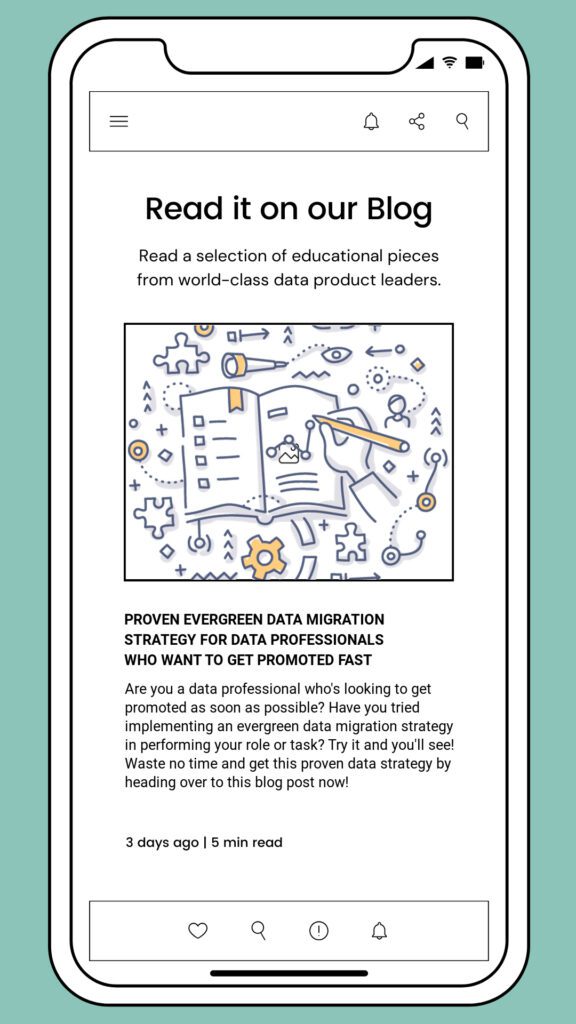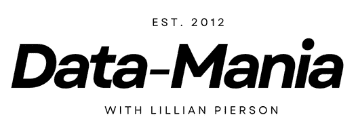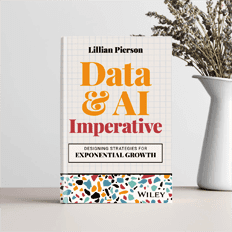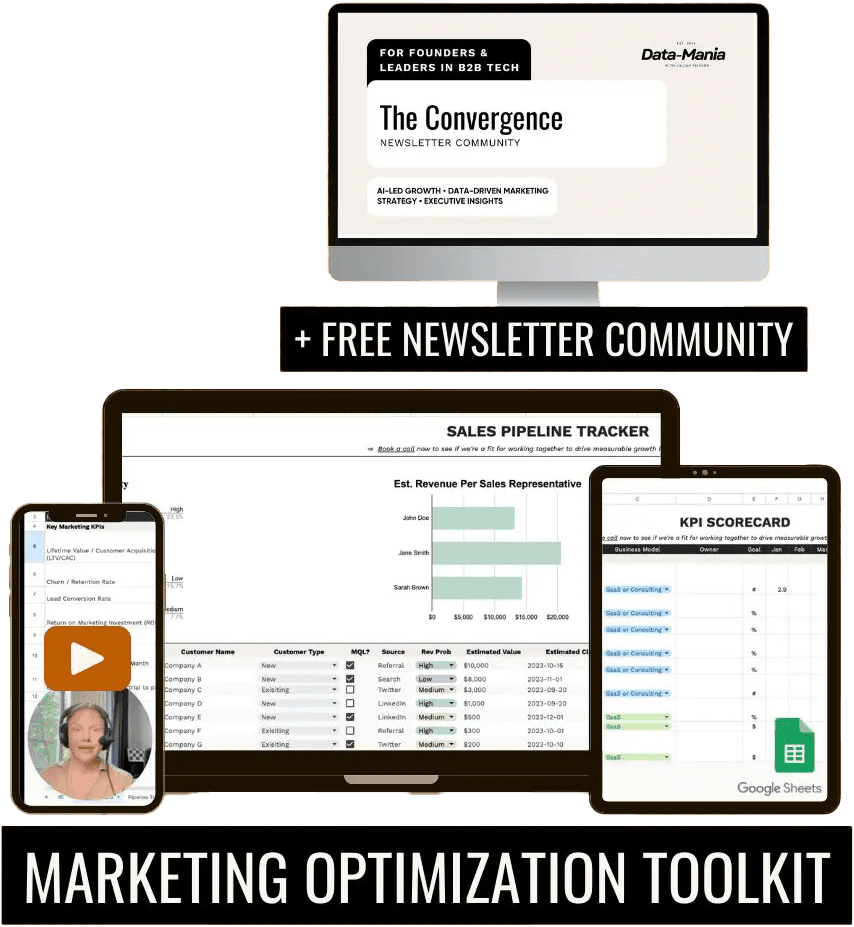Evergreen data migration strategy – what does it have to do with you getting promoted as a data professional? LOTS, actually. Well, depending on your role or where you’re trying to go, of course.

By the end of this article, you’ll have a pretty solid idea of how to build an evergreen data migration strategy for your company and how to get strategy building experience that is sure to attract the right type of attention from business leaders.
Whether you’re new to the data industry or like me, and have been at it for over a decade… It is vitally important for you to make sure that the work you’re doing on a daily basis is actually benefiting your company’s bottom line. It’s not that difficult for you to conceptually bridge that gap either.
How do I know? Well, to date I’ve educated over 1 Million data professionals on AI, so you can say I know a thing or two about data science…
That and I’ve been delivering strategic plans since 2008, for organizations as large as the US Navy, National Geographic, and Saudi Aramco.
If you prefer to read instead of watch, then read on…
THE STAR FRAMEWORK
Our entire data strategy will be centered around my proven evergreen data strategy framework – called STAR.

By applying this framework to your strategy building efforts, you can be sure you’re building an effective data strategy plan, despite changes in market condition – hence this being an EVERGREEN DATA STRATEGY.
ANOTHER beauty of the STAR framework is that it is completely vendor agnostic – and actually prompts you to dig deeper to explore and discover the most efficient data technology solutions given your company’s specific needs.
It’s comprised of the following 4 phases..
1. S – Survey the industry –
This is where you go around and do a ton of research looking at all the different use cases and case studies, and considering how those might fall into place with your organization’s current set up.
2. T – Take stock & inventory of your organization –
Collect or generate all sorts of documentation that describes the state of your organization as it currently is. This documentation could include:
- Surveys
- Interviews
- Requests for information
3. A – Assess your organization’s current state conditions
- Identify gaps
- Identify risks
- Identify opportunities
- Select an optimal data use case given specifics for your company
4. R – Recommend a strategy for reaching future state goals –
Make recommendations and develop a strategic plan for reaching future state goals. This is where you’ll lay out all of your recommendations and requirements in order to implement the use case.
Like I said, we are applying MY STAR framework to a data migration strategy building efforts – so essentially here, our use case has already been chosen for us – it’s DATA MIGRATION.
Although we’ve already been assigned a use case in this situation – we still need to apply the STAR framework so we can make sure we have all the project planning in place and that the strategy is feasible for the long term – say, 18-month future.
Let’s start looking at how the STAR framework would be applied to a data migration use case.
PHASE 1: S – SURVEY THE INDUSTRY
You’ll need to go around and collect a ton of research use cases that document other companies’ experiences with data migration projects. You do this in order to gather ideas of what’s actually possible and what’s most feasible for your company given its current technology set-up.
I’ll give you a head start on where to look for these. Here’s a whole set of data migration case studies by Foresight Group International.
If you’ve got a data migration use case that comes to mind, it would be awesome if you would link to it, or just name it and describe it in the comments. That way, our community can grow and help each other out along the way.
Now, for many of the steps and elements that we’ll be plugging in the STAR framework, I’m actually leaning heavily on the Data Migration Project Checklist – this is a migration checklist that was developed by Experian to help data leaders to utilize their Pandora technology. Nonetheless, it’s very good. Check it out here.
As I mentioned earlier, I strive for all of my content to be completely vendor-agnostic – which of course is a big reason why I recommend you to survey the industry and look at use cases and case studies before trying to decide what technologies to use.
PHASE 2 – T- TAKE STOCK & INVENTORY OF YOUR ORGANIZATION
Generally, this information-gathering phase will involve surveys, interviews and requests for information.
There are 5 main categories of information you’ll need to collect:
Let’s dig a little deeper into what you’d want to inventory if you were preparing to develop a data migration strategy
- Specifications – You’ll need a target mapping specification. This documents high-level objects and relationships that will be linked during the migration.
- Policies:
-
- You’ll need a configuration management policy – this policy will document how data migration project resources will be managed. You’ll need to have this handy because it’s gonna be needed for reference in the execution.
- You’ll also need security policies – these document the security restrictions across the organization.
- Lastly, you’ll need any existing data migration policy documentation.
- Agreements – Make sure to collect all 3rd Party agreements especially if they pertain to vendors and the requirements these vendors are covering
- Documentation – You’ll need to collect any relevant training documentation and existing data dictionary
- Assessment Findings – If your company has done a pre-migration assessment, you want to take a look at that so make sure you grab it, if not, you’ll have to produce one now.
Hey, if you’re liking my data strategy framework, you’d probably love the video I did on How to create an evergreen analytics strategy framework. Check it out!
PHASE 3: A – ASSESS YOUR COMPANY’S CURRENT STATE CONDITIONS
This is where you need to assess as it currently is in order to uncover any gaps, risks or opportunities as they may exist for your company today.
This is generally where you’ll Identify opportunities and select an optimal data use.
But here, of course, our use case has been prescribed to us as data migration. You’ll want to make sure that you’re thoroughly assessing these elements when building an evergreen data migration strategy. These elements include:
-
Gaps, Risks & Opportunities
You’ll need to produce a preliminary structured task workflow. This will help you identify:
-
- Gaps in budget and skill sets
- Gaps in knowledge or on-hand training resources
- Gaps, opportunities and risks within data skill sets, tools and resources
-
Privileges and Securities
You’ll need to assess what type of security issues are likely to arise during your data migration project. You’ll also want to look at your access rights and make sure you have everything you need, if not, you’ll need to put requests into place
-
Processes
You’ll need to create the following processes:
-
- Data quality management process – you’ll need to decide what type of processes you need to put in place in order to preserve your data quality rules as you work in the data migration project.
- Risk management process – you have to decide what measures you need to put in place in order to record and resolve risks as they occur.
-
-
Project Management
You need to do the following:
-
- Project estimates – you need to estimate how much time you have and how long it takes to complete the data migration.
-
-
Target mapping assessment and retirement strategy
You need to have a plan in place on how to educate users about where to retrieve or access their data once the old system is decommissioned.
-
- Assess relevant stakeholders on any issues that could arise among them
- Produce conceptual and logical models – these communicate and define the structure of the legacy and target environments. You want to make sure that these models are logical and easy to understand because they serve as fundamental communication tools between all team members and stakeholders.
-
Engineering
You’ll have to take a look at the hardware and software in order to assess and evaluate how you can make optimal use of your company’s existing data technologies, skill sets and data resources.
PHASE 4: R – RECOMMEND A STRATEGY FOR REACHING FUTURE-STATE GOALS
This is where you’re going to produce a lot of deliverables for your data strategy action plan. These are the following: 
-
Baseline Recommendations
-
-
- Production hardware and software requirements
- Project estimates – time & budget
- Milestone goals
- Key project resources – people, tools, data access
-
-
Strategic Assets
-
-
- Proposed update to data dictionary
- Standard project document templates – create project documentation such as risk register, issue register, acceptance criteria, project controls, job descriptions, project progress report, change management report, etc.
- Stakeholder communication plan
- Training plans – will help you ensure that all the relevant team members are properly trained before asking them to perform the work
- Data migration execution strategy
- Retirement strategy
-
-
Structures & Workflows
-
-
- Project delivery structure – this will probably resemble a standard waterfall approach: Analyze, Design, Build, Test and Launch.
- Recommendations for your structured task workflow
-
-
Specifications
-
-
- Target mapping design specification – this would be a complete source-to-target specification, down to the attribute level
- Interface design specification
- Data quality management specification
-
-
Draft Policies
-
- Configuration management policy – this document where data migration resource materials will be stored so they can be easily and quickly retrieved and easily during execution phase
- Recommended data migration policy
- Security policy – detailed resolutions to any security or data access issues you identified during the assessment phase
-
Draft Agreements
- Service level agreements
- Recommended 3rd Party supplier agreements and requirements
Congratulations, we have covered each of the four phases of the STAR framework. Now, what I recommend you do is go ahead and pull all of these together and start putting into place all of the pieces you need to produce an evergreen data migration strategy, then show it to your boss.
Look, even if they don’t let you take the lead on the project or if they take all the credit, if you continue on like this – going the extra mile to use data and company resources to produce transformative business results – then,
(1) you’re gonna build up a kick-ass CV that you can use to score a better job or
(2) you’ll be recognized and promoted within your current company
Either way, that’s a WIN-WIN for you!
If you want my 44-action item plan for building a fail-proof data strategy that works for every data use case under the sun (including the evergreen data migration strategy, as you’ve just seen here)… you should definitely check out the Data Strategy Action Plan.
The Data Strategy Action Plan is a step-by-step checklist & collaborative Trello Board planner for data professionals who want to get unstuck & up-leveled into their next promotion by delivering a fail-proof data strategy plan for their data projects.
Start executing upon our Data Strategy Action Plan today.
- Share It On Twitter by Clicking This Link -> https://ctt.ac/pT1ld
- Watch It On YouTube Here: https://youtu.be/1yeKVcVyyN4







